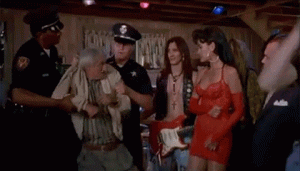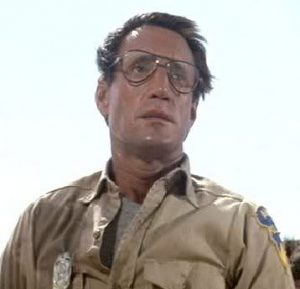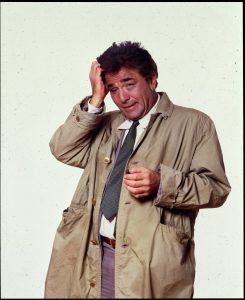Screenplay Structure: Building Your Story From the Ground Up
://www.movieoutline.com/articles/movie-screenplay-structure-building-your-story-from-the-ground-up.html
Structure is one of the most important parts of any story, whether it be for the screen or the page. This essay was originally written with screenplays in mind, but I approach my novels in the exact same way. Let me explain:
A friend of mine had a house built on the side of a hill in the Pacific Northwest. Beautiful view. At night, he’d stand on his deck and look out at the valley spilling out below him, moonlight reflected on the surface of the ocean beyond.
The house itself was a marvel of wood and glass and filled with just about any convenience you can think of, fully automated by a mainframe computer. People who visited usually stood around wide-eyed and slack-jawed, completely amazed by the place. It was that impressive.
A few months after he moved in, my friend was walking barefoot across his carpet when he noticed an odd bump in the floor. He explored it with his toes, then crouched down and ran his hands along the bump. Alarmed, he pulled the carpet back and felt his stomach clutch up when he discovered a crack in the foundation that ran the entire width of the house – a crack that literally split the place in half.
Frantic calls got him nowhere. He was told very matter-of-factly that the only way to fix it was to tear down the house and start from scratch with a new foundation. It turned out that the original contractor had used substandard cement that, coupled with a serious design flaw, couldn’t withstand the weight of the house. A week later, the storm of the decade washed half of it into the valley. Pieces of my friend’s dream were scattered from his perch on the mountainside all the way to the Pacific Ocean.
Despondent, my friend moved in with his parents while he contemplated what to do next. His father, a retired firefighter, said, “Can’t build a house without a solid foundation. Can’t have a solid foundation without a foolproof set of plans.”
And he was right. You can’t. And you shouldn’t.
When my friend told me what his father had said, it brought to mind something very similar that I (and many others) have been saying for years –- about writing, not houses. And if you’ve spent any amount of time trying to become a professional writer, you’ve heard it before:
Writing a story is like building a house. You can decorate it to your heart’s content, but without a solid foundation, it’s bound to fall apart.
WHAT STRUCTURE IS
When people ask writers what structure is, the most common response you hear is this: a beginning, middle and end.
Well, duh. Any moron knows that. We’ve all seen enough movies and read enough books to know that you’ve gotta start somewhere, end somewhere else and that a bunch of stuff has to happen in between. Otherwise what’s the point?
The trick is knowing where to start, where to end, and what to put in-between. If you’re laying a foundation with a faulty plan or substandard material, you’ll still have your beginning, middle and end, but there’s a pretty good chance that your story won’t stand up to much scrutiny.
Several years ago I read an article in Writer’s Digest by a writer named Gary Provost. Mr. Provost wisely compared a story to a basketball game, in which the players have an overall goal – to win the game. To reach that goal, they must face the challenge of several smaller goals, traveling from one end of the court to another in order to score baskets and, of course, to prevent the opposing team from scoring. All during the game, the two teams have conflicting goals and will do anything they can to stop the other from succeeding.
Mr. Provost was, I believe, trying to describe the nature of conflict in storytelling, and he did it in a way that not only tells us about conflict, but about structure as well. The two are so closely intertwined that it would be difficult not to discuss them both in the same breath.
Structure is a series of goals that lead to an overall goal. You can’t have your players wandering around for no reason. They have to have a purpose in life. They have to know what their objectives are and must be willing to fight (conflict) to reach those objectives.
A MAN WITH A PURPOSE
Let’s look for a moment at the movie, The Fugitive. While not a perfect action-thriller, it comes pretty close, especially in terms of structure.
It opens with a woman being killed. Her husband, a prominent doctor, is arrested and convicted for her murder, but he’s an innocent man. The real killer is a one-armed man, with whom he fought at the crime scene.
On the way to prison, there’s a terrible bus crash and the doctor escapes. Seizing this opportunity, he begins his quest to clear his name. And the only way to do this is to find the one-armed man.
This setup is the “beginning” of the story. Act One. It defines the main character, his situation and his overall goal, to find the real killer. Not only is this the character’s overall goal, it was the writer’s overall goal as well. It was the writer’s job to figure a way to get his hero to this goal in a dramatically compelling way. Not an easy task.
To accomplish that, the writer had to structure a series of sub-goals (think basketball) that would eventually lead his hero to the end of the game. Conflict helped him do that.
Let’s break it down:
In Act One of The Fugitive, what’s the first sub-goal? Not the hero’s goal, but writer’s.
Stuck? I’ll give you a hint: to get Dr. Kimble arrested. Plain and simple.
Kimble’s wife is killed, he fights with the one-armed man, the one-armed man escapes and Kimble is left behind with no alibi and blood on his clothes. The next thing he knows he’s arrested for murder.
In the process of setting up the character’s main objective, the writer uses this smaller goal as a kind of navigating point. The first act is a series of these navigating points, and by breaking the act down in this way, the writer is able to execute his story in more manageable chunks.
The second sub-goal in Act One is to get Kimble convicted of the murder, followed by a third, and slightly bigger goal (turning point) — the bus crash and escape that end the act and allow the hero to begin his quest toward his overall objective.
GOALS, GOALS AND MORE GOALS
The part of the story that usually makes or breaks the writer is the “middle” part, or Act Two. This act is commonly known as the confrontation act, and carries the bulk of the story. Again, like Mr. Provost’s basketball game, Act Two is filled with many sub-goals and, hopefully, a formidable force to keep the hero from reaching those goals.
In The Fugitive, Kimble has escaped in Act One, but Act Two brings him a whole new series of problems. His immediate objective is to get to safety and to take care of a gash in his side caused by the bus wreck. He runs through the woods in his prison garb, exchanges it for a truck driver’s overalls, then sneaks into the nearest hospital and tends to the wound.
These scenes are filled with conflict because Kimble is being pursued at the time by a new character the writer has introduced — Kimble’s nemesis, U.S. Marshall Sam Gerard, a hard-assed fugitive hunter. Gerard’s overall goal is to bring his man in. He’s the opposing team, trying to score those baskets and win the game.
So in Act Two, the first sub-goal is getting Kimble to the hospital. This sub-goal was created by conflict – the bus crash, gash and police pursuit — as Kimble reacts to and battles against it.
This, in turn, leads to yet another sub-goal or navigating point: the first confrontation between Kimble and Gerard. At the hospital, Kimble steals an ambulance, gets cornered by Gerard in a viaduct and jumps to certain death in order to escape. Again, by using this first confrontation as a navigating point and writing toward it, the writer was better able to manage his story.
Since we’re limited by space here, rather than continue through the story scene by scene, let’s look at some of the sub-goal/navigating points that helped the writer make it through Act Two:
Kimble survives the jump and heads back to Chicago.
He contacts a colleague, who helps him with money.
He goes to the prosthetic ward of a Chicago hospital and gets a list of one-armed men.
He calls several of the men, narrows down the list, and discovers one is in prison.
He goes to the prison, discovers it’s the wrong guy, but is confronted by Gerard and must escape.
He breaks into the one-armed man’s apartment, finds photos and evidence that raise questions about a drug Kimble’s own hospital had been testing, a drug Kimble knew was defective.
He goes to his hospital to investigate and discovers his colleague is behind his wife’s murder – with Kimble the intended target.
Each of these is a sub-goal/navigating point that helps the writer build his story. Moving parallel to this are a series of goals involving the Gerard character. By moving from one to the next, the writer is able to build a series of sequences, each affected by one preceding it.
By going beyond the simple “beginning, middle and end” and structuring your own story this way, your foundation becomes as solid as a rock, and the process is much easier to handle.
Like those before it, Act Three, the resolution, will have its own navigating points, the biggest of all being the hero’s success or failure to achieve his overall goal.
Have your eyes glazed over yet?
Hey, nobody said writing a screenplay is easy.
AH, BUT IT DOESN’T STOP THERE
Structure doesn’t end with these navigating points. When we break our story down further, each scene should have a goal and a structure of its own.
That’s right. In a well-written screenplay, each scene has it’s own setup, confrontation and resolution. These elements may not be as fully formed as they are in the overall script, but they’re there. I urge you to take a very close look at any well-written movie and see for yourself.
But don’t strain yourself too hard. There’s such a thing as overkill...
ARISTOTLE’S MODEL AND THE WHAMMY BOYS
Listen to new writers talk about structure, and it’s fairly obvious they’ve been listening to blow hards like me who insist that each story is comprised of three acts and that each act contains an approximate number of pages with a couple of turning points along the way.
Aristotle wasn’t an idiot, and based on my observations over the years, I’d say his model holds up pretty well. Even so-called five act stories are really three-act stories in disguise. And on closer scrutiny, even the infamous Pulp Fiction with its “revolutionary” time shifts follows Aristotle’s model.
Trust me, it’s true.
So it’s probably a good idea to have that model in the back of your mind when you write your novel or screenplay. After enough reading and writing and movie-watching, the three-act structure becomes ingrained in our system. So ingrained that we often forget it’s there.
When you’re at that point, a good way to approach structure is to design your story so that it loosely follows Larry Gordon and Joel Silver’s whammy chart, which, boiled down, goes like this:
Something must happen every ten minutes or so.
That something doesn’t necessarily have to be a shot of action as Gordon and Silver insist (hey, maybe you’re writing a love story), but it should be something compelling.
In other words, when you structure your story, take those sub-goal/navigating points I’ve been blathering on about and spread them out across the landscape of your screenplay so that each of them falls every ten minutes or so. Put a couple of the larger ones at the end of Act One and Two and you’ll do okay.
This isn’t as formulaic as it sounds. Really. In fact, I think as you work out your story you’ll be surprised to discover that these navigating points often take care of themselves in a very natural, intuitive way.
THE LONG AND WINDING ROAD
Anybody confused? I hope not. For those of you who are, simply think of what it’s like to drive across country. It would be impossible take the trip in one long haul, never stopping to rest and refuel. Before we get started, most of us pull out the map and mark our route and, to carry an analogy way too far, lay the foundation for our trip. We know exactly where we’re going and how to get there, but we’re always looking for places to stop along the way to make the trip a more pleasant experience.
So, go on, get out of here. Get your map, mark your route, and start driving.
And whatever you do, don’t get lost.
About Robert Gregory Browne
Robert Gregory Browne is an AMPAS Nicholl Award-winning screenwriter and novelist, the author of four thrillers with a supernatural twist published in the US, UK, Germany, Russia, Bulgaria and Denmark, and has a story in Lee Child’s crime fiction anthology, KILLER YEAR: Stories to Die For. That story was optioned for television, as was his first book, KISS HER GOODBYE. He’s a member of ITW and is a regular columnist for the Anthony Award nominated writer’s blog, Murderati. He’s currently at work on his fifth novel, PARADISE CITY, for Dutton books.

 It’ll move the story forward.
It’ll move the story forward. A Goal And An Opposition
A Goal And An Opposition While you come up with this sentence you may also want to name your character. By now you should have a good idea who the character is and what they stand for. Try to create a name which represents the character without sounding cliché. Lt. Columbo is a great name for the character. Straight away you know his rank within the police force, while Columbo is a step away from Columbus, a man famed for thediscovery of America. You might also note that Columbo never gave a first name, adding to his mystery.
While you come up with this sentence you may also want to name your character. By now you should have a good idea who the character is and what they stand for. Try to create a name which represents the character without sounding cliché. Lt. Columbo is a great name for the character. Straight away you know his rank within the police force, while Columbo is a step away from Columbus, a man famed for thediscovery of America. You might also note that Columbo never gave a first name, adding to his mystery.